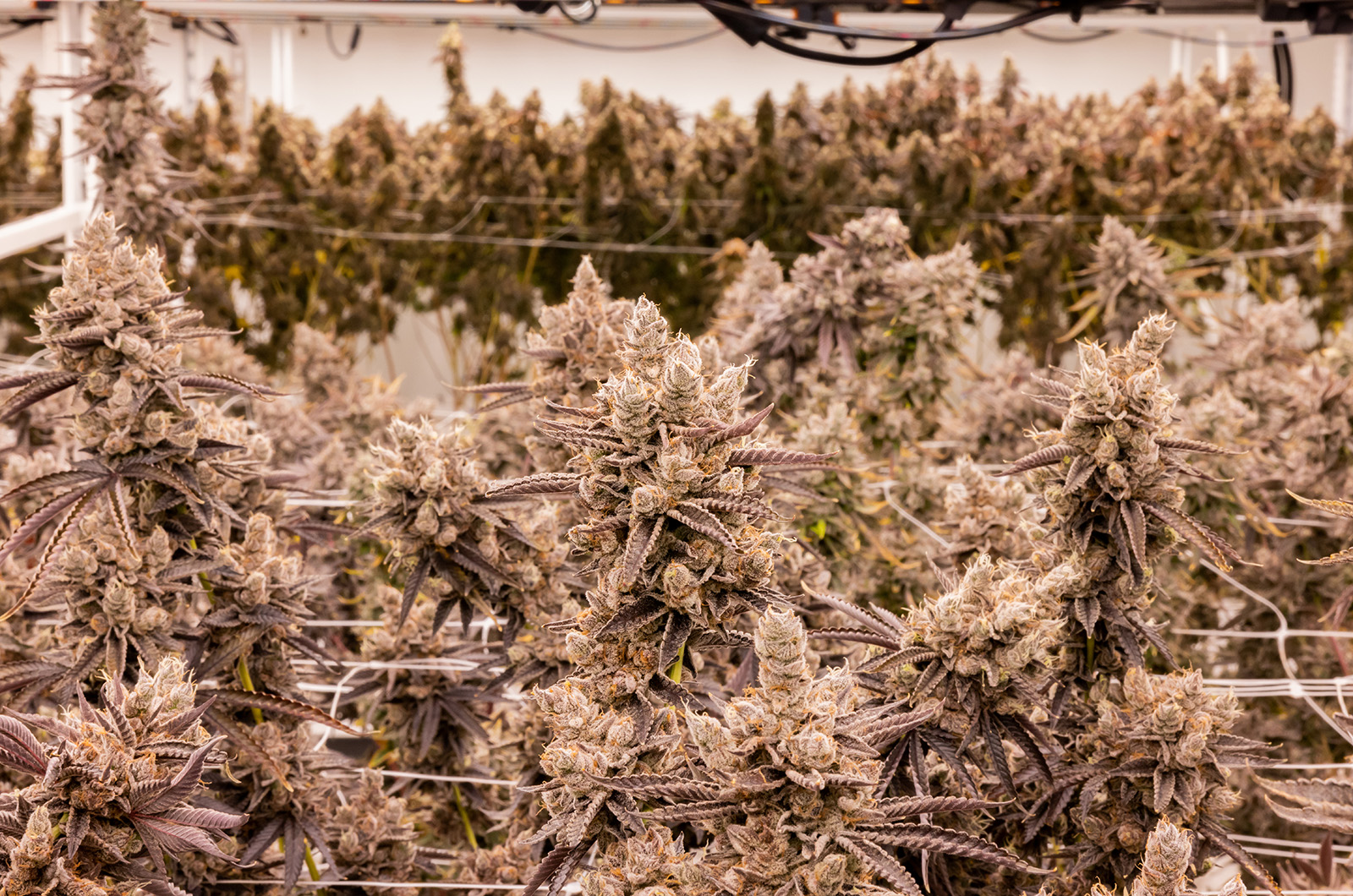When Dr. Daniel Fisher cut a road through the woodlands, it was with agriculture in mind. All through the 1860s, in the halcyon days of the whaling industry, horse carts rattled eastward from West Tisbury, loaded with flour to be baked into hardtack and stowed below deck on the ships he bankrolled.
In 2023, Dr. Fisher Road is still an agricultural throughway, not for flour but flower, the product of genus cannabis. All marijuana sold on Martha’s Vineyard is grown there, in a hulking wooden warehouse on that same dirt road, with an attitude of Island self-sufficiency to make the doctor proud.
“Everything that’s sold here has to be grown here, since it can’t cross federal waters,” said Greg Rubick, general manager of cultivation at Fine Fettle, which owns the operation.
Our particular combination of government jurisdiction and Island geography dictates that the Vineyard marijuana industry be an eminently local one. Fine Fettle grows its own product, and sells to Island Time, the other Vineyard retailer.
Mr. Rubick, then, is a good choice for the job. A lifelong gardener and native of West Tisbury, he found himself frustrated with the historic treatment of marijuana growers on-Island, back when helicopters searched for plants from the skies. He relocated to California for a few years to learn the cutting edge of cannabis cultivation, returning to the Island to bring those practices with him as soon as it was legal.
“People keep trying stuff and it works, and so the techniques just keep getting better,” Mr. Rubick said of the growth in cannabis-growing technology over the recent decades.
Those techniques are put to good use at the Fine Fettle warehouse, a high-tech and highly-controlled growing operation. Upon entrance, I was supplied with a full-body jumpsuit, sanitized cloth booties and hairnet, all to prevent pests from entering with me.
“There’s some stuff we never speak of,” said Mr. Rubick of the worst case scenario, a facility-wide infestation of spider mites and powdery mildew. “The staff has to be trained to identify them immediately,” he said.
From seed to flower, marijuana growing takes about three-and-a-half months, a selective process each step of the way. Like most crops, it begins with seed but, as Mr. Rubick explained, not every seed is a winner.
“We are only looking for the superstars,” he said. “We want vigorous, strong plants.”
When the team gets a batch of seeds, they begin a process of “pheno hunting,” sprouting and growing the batch in search of the best genetic plant phenotype. Once a few choice specimens are selected, they are moved to the “mother room,” where the plants are put onto an intensive grow schedule, 18 hours of artificial light and four hours of dark, meant to supercharge the growth process.
It is from these mother plants that the actual crop is sourced, genetically identical clones grown from cuttings. Though cannabis seeds produce male and female plants, each of the cloned specimens is female, ensuring that they produce the coveted THC-rich flowers.
After they are fully grown, those clones are moved into the “flower room,” and transitioned to a 12-hour light cycle that stimulates the plants to begin flowering. It is a bright, warm and humid room, its conditions computer operated. Two stories of plants, stems heavy with ripe flowers, densely pack the shelves, days away from harvest, smelling sharply of citrus.
Mr. Rubick says they are still working out the kinks in operating the cannabis-growing systems on-Island. Most of the technology was developed in arid Colorado, where recreational marijuana was first legalized, and doesn’t account for the high-humidity Vineyard air.
Still, his excitement for their potential is evident. The enthusiasm was palpable in his voice as he extolled the virtues of the new indica strain soon to be picked and dried, the so-called white truffle variety. “We’re making history,” he said of their farm. “Nothing like this has ever been done here before.”








Comments
Comment policy »